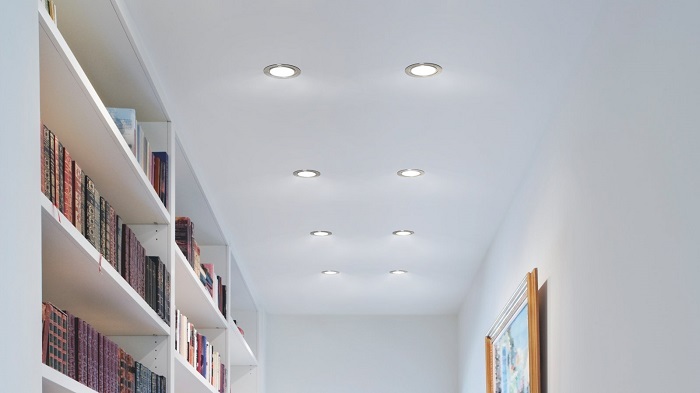
The first and most crucial advice concerning downlights is to go with LED from the start or replace any available halogen downlights you already have installed. The use of halogen is gradually being phased out. It's on its way out, much like the old incandescent bulb. Because LED is far more efficient than halogen, this is the case.
Governments must cut energy usage, and phasing out halogen in favour of LED is a simple solution. It's a victory for everyone else, too, because LED is a superior technology that lasts longer and isn't a fire danger like halogen.
Most LED downlights may be safely insulated using insulation. They last for a long time. So get with the program and switch to LED lighting. You will not be sorry.
The purpose you want the lighting to accomplish is to consider before deciding on your LED downlight spacing when creating the appropriate arrangement. Is it for a living room that doesn't require clinical lighting or a kitchen that needs adequate lighting?
Some properly positioned downlights may emphasize a specific region or be slanted to illuminate things on the wall, such as paintings. Your lighting system should represent the function of the room, which might occasionally be merely ornamental.
However, the optimum lighting plan is to have the light directly overhead and equally spread. To determine the spacing, you'll need to know the downlights' luminous flux and beam angle. The beam angle defines the dispersion of light.
So, what exactly is luminous flux? It's a technical word that refers to the quantity of light output in lumens. The more the lumens, the brighter the light. The typical brightness for downlights is 800 lumens. Any less is mood lighting, while any more is a little too bright for home use.
Keep in mind that the majority of LED downlights can be dimmed. The angle of the beam is the next factor to consider. A 100-degree beam angle provides an excellent uniform distribution for basic room illumination.
Anything less is too narrow, resulting in places that are pretty bright and others that are not. Shadows should be avoided, and light should not be wasted too near to the wall.
Starting from a corner, place standard 800-lumen downlights with a 100-degree beam angle 1 meter from the wall, then equally arrange them on the ceiling at 1.2 or 1.5 meters apart, depending on the room's proportions.
When shopping for LEDs, you'll notice numerous statistics on the box related to "colour temperature." Lights are classified as either "warm white" or "cool white," with 4,000K to 6,000K.
The 'whiter' the light looks, the higher the figure. 6,000K, often known as cold white, has a clinical look and should not be used in living areas. Warm white (4,000K and lower) is the colour temperature most people like in their living areas.
You don't have to settle with standard white downlights, although even those come in various styles. The light may have a range of colour temperatures to choose from, such as warm white, neutral white, or cold white.
If you decide to go all out, you can buy smarter versions that you can dim with an app or change to all the colours of the rainbow.
You may adjust gimbal downlights, also known as adjustable downlights, to concentrate on a wall or tilt away from a line of sight to decrease glare.
Also, downlights don't have to be spherical. Square and rectangular ones with two or even three lights are available. As a result, you are not limited to a single type of recessed lighting.
Pinhole downlights are circular downlights that have a recessed light. These generate a narrow beam with little glare, and they're frequently employed as effect lighting.
All of these distinct types of downlights are suitable for diverse applications. If you're looking for bathroom downlights, choose ones that are bright and have superb colour rendering. It's also advantageous if they have a high IP rating (IP65) to protect them from steam and splashes. To find out, look in the box.
Colour temperature is not similar to colour rendering. A neutral 5000K colour temperature in the bathroom is preferable, although a CRI of 80 or above is required.
The Colour Rendering Index (CRI) is a scale that ranges from 1 to 100. Colours look more lifelike as the number increases. A high CRI score is suggested if you want to see how you genuinely seem in the mirror. However, lights with a score of 90 or above are usually specialized museum and medical lighting, which may be excessive.
It's past time to upgrade your halogen downlights. You'll save money on electricity bills and won't have to replace bulbs as frequently. But what if the hole in the ceiling you've left is too big for the new LEDs you've chosen?
Not to worry, adapter plates are available to solve the problem. Also, because you'd be replacing like for like in terms of brightness and colour temperature, there's no need to adjust the spacing of the downlights.
Take a good long hard look at LEDs if you want the clean aesthetic of downlights in your home without the continuing price or insulation difficulties.
 Call Now
Call Now